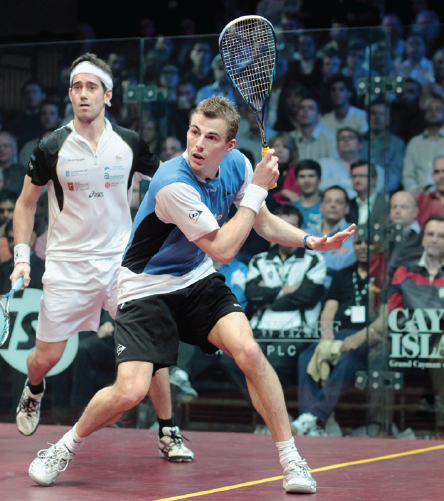By Damon Leedale-Brown, Sports Scientist & Conditioning Specialist
Hopefully this article will be read by players of all ages, some with aspirations to further improve their playing level, and others with the goal of simply trying to maintain performance at their current level. Achieving your goal of becoming a better player is very difficult if you are regularly picking up injuries and, as a result, struggle to perform consistently throughout the season.
It is fairly natural to believe that, to become a better player, the best approach is to spend more and more time on court. If we have a passion for the sport then the court is nearly always the first place we would choose to be! Time on court is important as this is where we can work on technical and tactical development, and create simulations through conditioned games and practice matches to help replicate some of the mental & physical challenges we will face during competition. In addition, more time spent on court working with the ball generally leads to increases in our specific on court fitness & physiology. So where is the downside to all this?
If all we do to train for our sport is the sport itself then typically what starts to develop alongside improvements in court fitness & physiology are reductions in our overall musculoskeletal body health. It is not uncommon to see a player break down physically at a point where they feel they are reaching a high level of court fitness. So what are the mechanisms behind this?”

Squash is, in many ways, a very one-sided sport. We always strike the ball with the racket in the same hand, and the nature of the way we move on the court normally means that we will lunge significantly more onto our dominant side (i.e., right hand—right leg). I have just watched the first 10 points of the final in the recent North American Open between the top two men’s players in the world, Nick matthew and Ramy Ashour. Looking at movements where they clearly step out (lunge) onto one leg, Nick has a ratio of 2.3 to 1, and Ramy 3.4 to 1 when comparing right to left leg. Basically this means that for every lunge Nick does on his left leg he does 2.3 lunges on his right leg, and for Ramy every lunge on his left side is countered by 3.4 lunges on his right side—a significant difference. Nick is probably the best squash athlete in the world currently—and one of the players who is more capable of stepping out onto his left leg mid-court on his backhand side. This is by no means an easy skill, requiring considerable strength and balance in your movement, and is an area that I spent considerable time working on with Nick in his early phases of development as a pro player.
The result of all this one-sided activity is that the body starts to develop tightness and restrictions in muscles and tendons, particularly around the hip and shoulder region of the racket side, and imbalances in strength start to become more significant between the dominant and non-dominant side. On top of this, squash players tend to have restricted mobility in certain areas of the back, particularly the mid-back (thoracic spine), combined with often severely limited ankle mobility. The muscle groups at the front of the body tend to become tight and dominant (i.e., hip flexors/ quads), while the muscles at the back of the body tend to be weaker or not function as well (i.e., glutes/shoulder retractors and upper back muscles). Not surprising, then, that at some stage these mobility and strength imbalances will result in injury if not corrected.
Some common overuse injuries that we see in squash players include: pain and irritation in the shoulder and elbow of the racket arm; soft tissue and skeletal (bone) problems with the lower back and hips; overworked hip flexors and hamstrings resulting in tightness, soreness, inflammation and often damage to the tissue (tears in the muscles and tendons); tendonitis of the knee; lower leg problems such as stress fractures and shin splints; achilles tendonitis. Unfortunately, when these injuries occur, they tend not to be minor issues from which a player can recover in a few days, but more chronic problems that can take weeks and even months of rehabilitation work before the player can get back to previous competitive levels. From my experience with elite athletes and squash players over many years, I firmly believe that these injuries are a result of a combination of factors we have discussed: poor movement techniques, restrictions and imbalances in mobility through key joint areas (i.e., hips, ankle, shoulder etc.), muscular strength imbalances and weaknesses, and, of course, constant repetition of the compromised movements which ultimately lead to the body breaking down.
So how do we create balance in our on and off court training, and introduce correct training techniques that allow us to develop the physical attributes to compete successfully on court while at the same time keeping our bodies fit and healthy? In the next issue we will discuss the important components of a training program to maintain body health, and share examples of some of the training routines followed by the top players in the world that allow them to perform at such a high level physically while minimizing their risk of injury—all routines that the amateur player would benefit from as well, if not even more!





